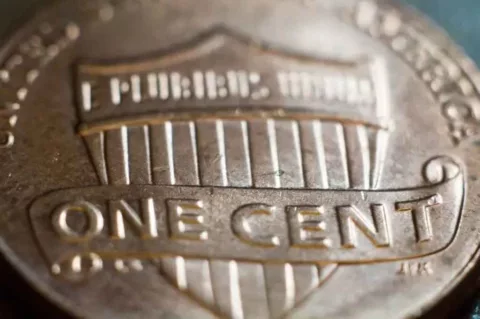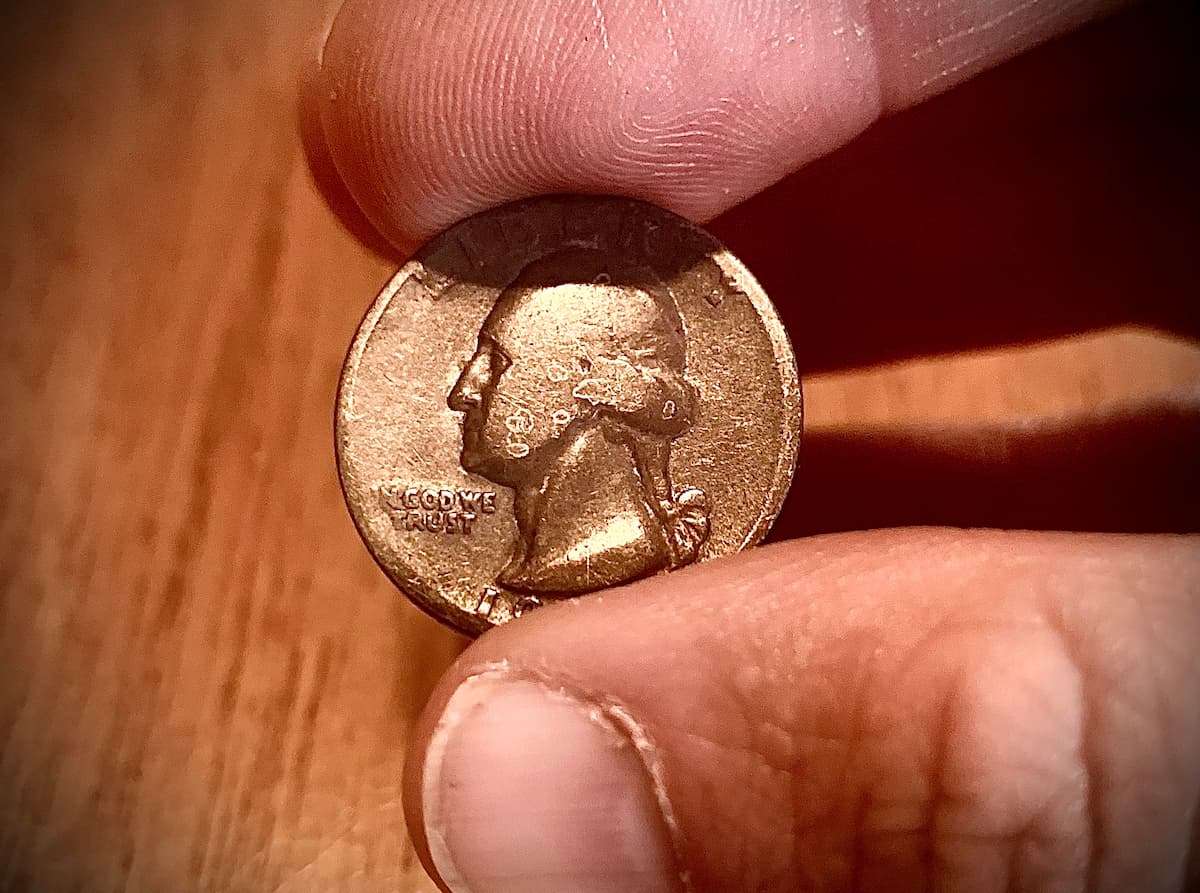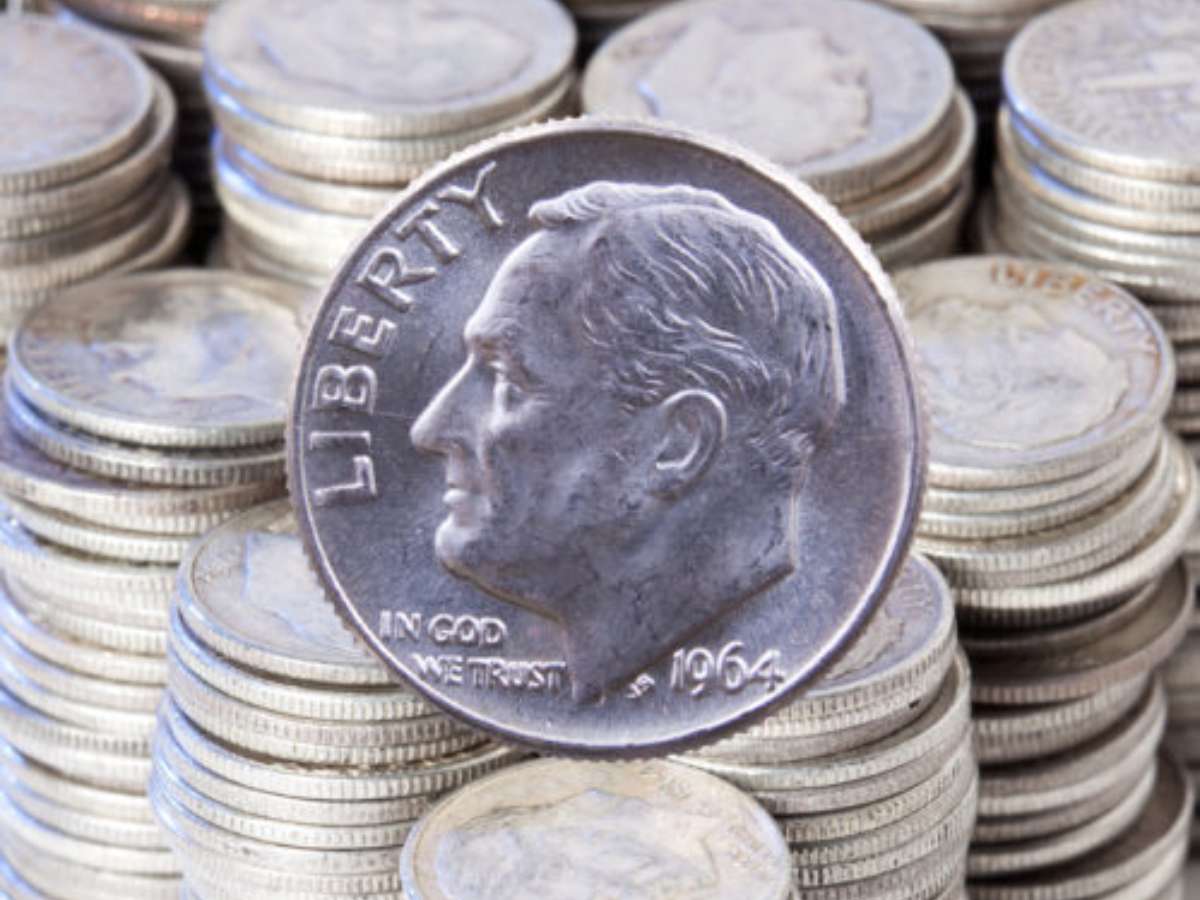The 2010 pennies are worth looking for, as they were the first to carry the union shield design now seen on the reverse (“tails side”) of the Lincoln cent.
But there’s more than a revamped design that makes 2010 pennies a collector favorite!
Many 2010 Lincoln shield pennies are worth more than face value, IF you know what you’re looking for.
Here’s how to tell a common 2010 penny apart from a valuable 2010 penny, and how much 2010 pennies are worth….
What’s Interesting About 2010 Pennies?
The 2010 pennies mark the beginning of a new era for Lincoln cents — which have been made since 1909.
The Lincoln penny was originally designed by Victor David Brenner, whose “VDB” initials can be found on most pennies just below Abraham Lincoln’s shoulder on the obverse (“head’s side”) of the coin.
From 1909 through 1958, the reverse design was a pair of wheat stalks encircling the words “ONE CENT” and “UNITED STATES OF AMERICA.”
That changed in 1959 with the introduction of the Lincoln Memorial motif by Frank Gasparro, whose design for the back of the penny continued through 2008.
In 2009, the United States Mint honored the 200th anniversary of Lincoln’s birth with a series of 4 special designs depicting various aspects of the 16th president’s life.
A new permanent design was implemented in 2010 commemorating the union, which President Lincoln helped preserve despite the catastrophic implications of the United States Civil War.
The first Union Shield pennies were struck in 2010, bearing a reverse design by Lyndall Bass and destined for a long life on the back of the Lincoln cent.
Now, let’s talk about how much 2010 pennies are worth today…
2010 Penny Value (No Mintmark)
The 2010 penny with no mintmark under the date is a very common coin — with 1,963,630,000 having been struck at the Philadelphia Mint.
It’s totally normal for 2010 pennies from the Philadelphia Mint to not have mintmarks, because the Philly Mint did not include a “P” mintmark on the 2010 Lincoln penny.
So, the 2010 no mintmark pennies are not rare coins. But this doesn’t mean they aren’t worth looking for in your pocket change!
Here’s how much they’re worth:
- Most 2010 pennies with circulation wear and no signs of errors or varieties are worth only their face value of 1 cent.
- Uncirculated specimens — such as the ones from bank rolls and those you may find that look brand new — are worth 10 to 30 cents.
- The most valuable 2010 penny ever sold was graded MS69RD by Numismatic Guaranty Company and fetched $1,007 in a 2019 auction.
2010-D Penny Value
The 2010-D penny carries a “D” mintmark under the date, declaring that it was made at the Denver Mint. That’s where 2,047,200,000 pennies were made in 2010.
Yep, 2010-D pennies were made in even larger numbers than the 2010 pennies from Philadelphia!
As you might suspect, 2010-D Lincoln cents are not generally considered rare — but, again, some are more valuable than others!
Here’s how much they’re worth:
- Circulated examples with wear are worth 1 cent.
- Uncirculated examples are worth 10 to 30 cents.
- The most valuable 2010-D penny was graded MS67RD by Professional Coin Grading Service and took a whopping $4,994 in a 2013 auction.
2010 Satin Finish Penny Value
The United States Mint sells sets of uncirculated coins representing each of the different designs and denominations produced in a given year.
That was the case in 2010, when the U.S. Mint sold uncirculated sets containing coins minted with a special satin finish.
Among these coins was the 2010 satin finish penny, of which 583,897 were struck.
They were all sold in the uncirculated sets — none was released by the U.S. Mint for circulation.
Here’s how much they’re worth:
- The typical price for an individual specimen of the 2010 satin Lincoln penny is $1 to $3.
- The most valuable 2010 satin finish penny was graded SP68RD by Numismatic Guaranty Corporation and hammered for $79.95 in a 2018 auction.
2010-D Satin Finish Penny Value
The 2010-D satin penny from the Denver Mint — like its Philly counterpart — was struck for inclusion in 2010 U.S. Mint uncirculated sets. It has a special matte-like finish.
Also identical to the Philadelphia satin finish penny of 2010, only 583,897 specimens of the 2010-D Lincoln cent with satin finish were produced.
Here’s how much they’re worth:
- Values for the 2010-D satin finish penny usually hover between $1 and $3.
- A particularly nice specimen graded SP69RD by Professional Coin Grading Service took $995.95 in a 2018 auction.
2010-S Penny Value
The 2010-S Lincoln cent boasts a gorgeous, mirror-like finish with frosted designs and lettering. This penny was minted specially for collectors who bought 2010 proof sets.
The 2010-S pennies were struck to the tune of 1,689,216 pieces, and none was released for circulation.
That doesn’t mean you won’t have the outside chance of finding one in your pocket change that was cracked out of its holder and spent as regular money, though!
Here’s how much they’re worth:
- A 2010-S proof penny tends to sell for $2 to $5 on an individual basis.
- The most valuable 2010-S penny, graded PR70DCAM and in a Professional Coin Grading Service holder with an autograph by Lyndall Bass, notched a winning bid of $507 in a 2010 auction.
IMPORTANT: What Is The Grade Of Your 2010 Penny?
To determine the true value of your 2010 Lincoln cent, you first need to know what condition (or grade) your coin is in.
Grab a coin magnifier and a copy of the U.S. Coin Grading Standards book. Then, watch this video to see how to grade coins yourself at home:
These coin grading apps make grading coins yourself SO much easier!
A List Of Rare 2010 Error Pennies To Look For

It’s very hard to find 2010 pennies with real errors or varieties and not just post-mint damage.
Most of the unusual-looking 2010 pennies out there are simply exhibiting various signs of damage and are worth only 1 cent. However, there are some legit errors and varieties to look for!
Here are some 2010 penny errors and their values:
2010 Doubled Die Penny Error
The 2010 penny with doubled die is a very challenging coin to find.
You’ll want to look for signs of doubling in the lettering, date, Lincoln’s eye and tie, as well as the columns of the Lincoln Memorial.
The values for 2010 doubled die error pennies vary, but many are in the range of $20 to $50.
2010 Off-Center Penny Error
Among error coins, off-center pennies are rather common — but they’re still really cool!
They can range from showing only a very minor off-center strike to being more than 75% off-center (or three-quarters of the design is missing).
A typical 2010 off-center penny showing 10% or 20% of the design missing might be worth anywhere from $5 to $15… maybe a little more.
The most valuable type of off-center error on a 2010 penny, in which about half the design is missing yet the date is still fully legible, could take more than $100.
2010 BIE Penny Error
BIE pennies, which show a little vertical die crack resembling the capital letter “I” between the letters “B” and “E” of “LIBERTY,” are neat collectibles.
Though relatively common, some collectors pursue one example of a BIE Lincoln penny from each year they can possibly find — which is one reason this type of penny error and variety collecting is so hot.
A nice example of a 2010 BIE penny might sell for $7 to $15.




